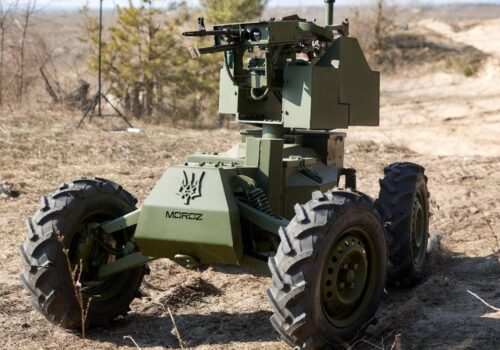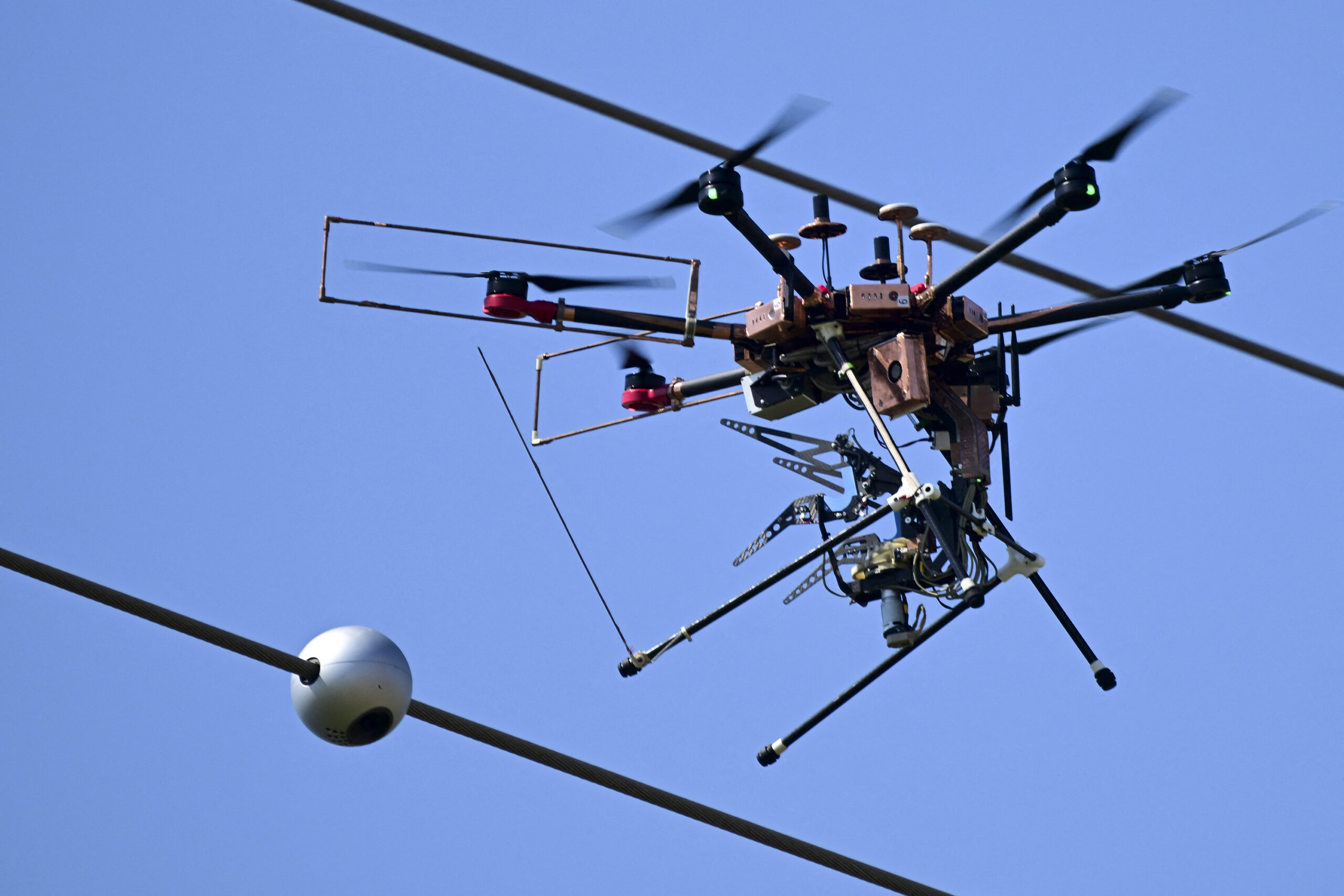Last month, many Americans on the East Coast were watching the skies, and not just for Santa and his flying reindeer. In December, the news was full of reports of unidentified drones spotted over New Jersey and New York. Many of these flights were perfectly legal, yet some flouted existing regulations, including airspace violations over airports and military facilities. At the time, then President-elect Donald Trump, Senator Richard Blumenthal (D-CT), and several other prominent US politicians called for the drones to be shot down. Some leaders, such as Governor Kathy Hochul of New York, demanded policy changes to address the uncertainty and concern the drone reports caused. A month has passed since these reports, and the issue seems to have faded into the background. But it would be a mistake not to draw important lessons from this episode. As private and commercial small uncrewed aerial systems (sUAS) continue to proliferate, similar situations are likely to occur in the future, and they could be more disruptive than the brief dustup in December.
The core issue underlying the New Jersey drone concerns is one of public perception. Citizens felt unsafe and political leaders searched for solutions. Potential solutions generally fell into two groups: intervention and policy change. However, existing policy is not lacking; rather, the main impediment is that local and state authorities need the capability to respond meaningfully to sUAS incidents. To ensure public safety and security, the Federal Aviation Administration (FAA) should work with local and state authorities to implement law enforcement networks based on the principles seen in military integrated air defense networks, although at a smaller (and less expensive) scale.
Current policies
Since its inception in the 1950s, the FAA has been responsible for almost all aviation matters, including airspace management and enforcement. In 2012, Congress mandated that the FAA plan for sUAS usage by both private and commercial operators. In 2016, the agency published Part 107 to fulfill the mandate. Among other rules, sUAS operators were required to remain below four hundred feet above the ground, and night flights required anti-collision lights visible from at least three miles away. Notably, since 2021, sUAS have been required to broadcast an identification signal referred to as Remote ID. This signal is effectively a digital license plate, both identifying the drone and providing the operator’s location.
The regulatory policies failed in December because authorities could not identify the sUAS or their operators. However, it remains unclear if the policies failed because the sUAS were not in compliance or simply because authorities did not possess the ability to receive the Remote ID information. A June 2024 Government Accountability Office report suggested that in earlier instances of drone encounters, the latter cause was more likely than the former. Additionally, since many of the drones in December were spotted because they were following anti-collision light regulations, it stands to reason that many of the drone operators may also have been complying with Remote ID requirements. The question stands: Did enforcement agencies simply lack the capacity to receive the broadcasted information?
The issue of enforcement
Considering the issues with Remote ID described above, it is unlikely that the regulations themselves were the failure point. It’s more likely that authorities instead lacked both the ability to address public concerns by being able to identify the drones and the capability to intervene in those sUAS flights that were violating the law.
This is partly because the FAA, while focused on safety, is the agency responsible for aviation enforcement. But the FAA lacks the ability to rapidly respond to sUAS incidents and instead relies heavily on local and state authorities to deal with such incidents. The enforcement question, therefore, is what do local and state law enforcement agencies need to effectively police the low-altitude skies?
Police regularly patrol to detect potential legal violations and intervene quickly when necessary. The same logic should hold true for the very low-altitude area in which sUAS operate. While the FAA should retain overall authority for this region, local and state authorities should actively police this domain to ensure compliance with federal statutes and FAA regulations. The National Guard and state militias may be able to assist with some of these operational problems, and military concepts related to air defense illustrate how law enforcement agencies might best resolve this issue.
Integrated air defense systems
Militaries develop aggregated networks known as integrated air defense systems (IADS) to defend airspace. IADS are not unitary systems; they can range from basic to incredibly complicated systems of systems. Broadly speaking, IADS are comprised of three components: air surveillance, weapons control, and battle management.
Air surveillance makes up the systems and processes which detect, identify, and track air objects. Air surveillance is synonymous with the detection function in UAS security discussions. Weapons control is target engagement. Within weapons control there may be several processes occurring to acquire, track, and engage the target. Depending on the engagement system, this can be as simple as pulling a trigger or it can be a complicated sequence of actions to operate an advanced device.
The gap within UAS security discussions is battle management. One description of IADS states that battle management includes: threat evaluation, engagement decision, weapon selection, and engagement authority. This is the critical missing piece to the domestic counter-UAS discussion. Someone must assess what is happening in the air and decide what to do. Clearly, UAS flying in the United States does not constitute a “battle.” Nevertheless, the concept of a centralized command-and-control node holds true, and such a system would likely have prevented much of the public furor in December.
Completing the “enforcement chain”
How might the incident in December have been different with these capabilities? Imagine a management center receiving surveillance information to quickly resolve calls from concerned citizens to identify the drones. State police could have responded to illegal activity and handled the situation, including the ability to safely neutralize the drone if necessary.
A state-wide management center might have received surveillance information of the low-altitude air domain to both identify potential enforcement issues and to serve as a primary conduit to other agencies, especially the FAA’s Law Enforcement Assistance Program (LEAP), if questions arose or authorities perceived a need for intervention. Given the FAA’s area of responsibility, any direct intervention against sUAS should only be conducted with FAA approval, unless local law enforcement must act to protect people or property. Yet, since there is a paucity of LEAP agents in the country, such a management center could dramatically improve coordination between local, state, and federal agencies.
Assessing the costs
These capabilities are costly but not cost prohibitive. Much like the FAA’s NextGen air traffic control system will rely on GPS-based position broadcasts from aircraft as opposed to traditional radars, a detection network can rely on Remote ID sensors rather than more expensive active sensors. If one assumes that many of the sUAS observed in December were complying with FAA regulations, then many could have been identified by an appropriate detector.
For example, Morris County, New Jersey, where the drone sightings began, is about 482 square miles in size and appropriated $77.8 million for public safety in 2024. Many commercially available Remote ID detectors can range between two and five miles, and some can sense much farther. These detectors range in cost between $1,500 and $3,000 for mid-grade to advanced models. Assuming a three-mile detection range and not accounting for terrain, a detector network covering all of Morris County (an excessively large network) would require fewer than twenty detectors costing about $60,000, or less than 0.01 percent of Morris County’s annual public safety expenditures.
Networking the detectors and linking them to a management center would be more costly, of course, but certainly should be affordable, especially if spread over several years. In 2024, the state of New Jersey appropriated $880 million for public safety. A small fraction of this could be used over several years to develop the necessary infrastructure, which should be primarily software, and train a small crew to staff the center. Additionally, given the FAA’s overall authority, Congress could appropriate money to enable the FAA to create standards for these law enforcement centers and help design and field appropriate software applications.
In short, creating this system will not be free, but it need not be excessively expensive. One way that states can keep expenses low is to choose where to establish these capabilities. For example, it may not be necessary for a state like North Dakota to establish a surveillance network anywhere except over urban areas. Indeed, the North Dakotan government may not need to create a management center at all, relying instead on county or city governments to monitor and manage their areas. Each state and municipality will have its own priorities and physical characteristics influencing the design of the system. States are not trying to build military-grade IADS, but they should be trying to create an adequate law enforcement network for the low-altitude domain.
Securing the skies
Ensuring public safety in low-altitude domestic airspace requires governments to solve three problems. First, detection capabilities need to spread and should integrate to form a cohesive “picture” of the low-altitude air domain. Second, states need to establish basic management functions for very low altitude air law enforcement. Finally, authorities should procure and train personnel to use UAS mitigation systems. Some specific recommendations are:
Detection:
- The FAA should accelerate the development of methods for local and state law enforcement to rapidly access Remote ID information.
- States, in coordination with the FAA, should decide whether to build a state-wide detection network or focus on municipalities. A sparsely populated state should lean toward municipal networks while a very developed state should hew toward a state-wide network. Regardless, states and the FAA should ensure that data is networked together to form a coherent picture of airspace below 1,000 feet above the surface.
Management:
- States or counties, in coordination with the FAA, should introduce a basic management center which can assess the information gathered by the detection network; act as a communications hub with other agencies, especially the FAA’s LEAP agents; and dispatch mobile mitigation teams.
- The FAA should establish standards and help create baseline applications for centralized center usage.
Mitigation:
- States or counties, in coordination with the FAA, should train and equip mitigation teams available to respond throughout an area to UAS incidents. Once on-scene, these teams should be able to identify specific UAS, neutralize or capture the UAS, and/or locate the operator based on Remote ID information for follow-on enforcement action.
Within each area, policymakers and leaders should recognize the overall authority of the federal government and the FAA over aviation. At the same time, Congress and the FAA should embrace the reality that local and state authorities will enforce UAS policy. Put simply, they are the ones who are there. This means that the federal government and the FAA should actively support state authorities in developing UAS security capabilities so that the next drone issue is mitigated before it becomes another drama like the one in December.
E. Aaron Brady is a US Air Force officer and A-10 instructor pilot with more than 2,500 flight hours currently serving as a national defense fellow at the .
The views expressed in this article represent the personal views of the author and are not necessarily the views of the Department of Defense, the Department of the Air Force, the Air University, or any other US government agency.

Fri, Jan 17, 2025
Eight big ideas for the second Trump administration
New Atlanticist
By
President-elect Donald Trump has promised to shake up US policies early in his second term. experts share eight ideas on where to start.

Thu, Jan 9, 2025
Ukraine hopes robot army can counter Russia’s battlefield advantages
UkraineAlert
By
As Ukrainian commanders prepare for a fourth year of Europe’s largest war since World War II, they are hoping their country’s growing arsenal of robotic systems can help counter Russia’s often overwhelming advantages in both manpower and firepower, writes David Kirichenko.
Image: A drone flys backwards before landing after installing a Magic Orb to a power line Tuesday, April 30, 2024 in Maple Grove, Minn. (Aaron Lavinsky/StarTribune/TNS/ABACAPRESS.COM)









